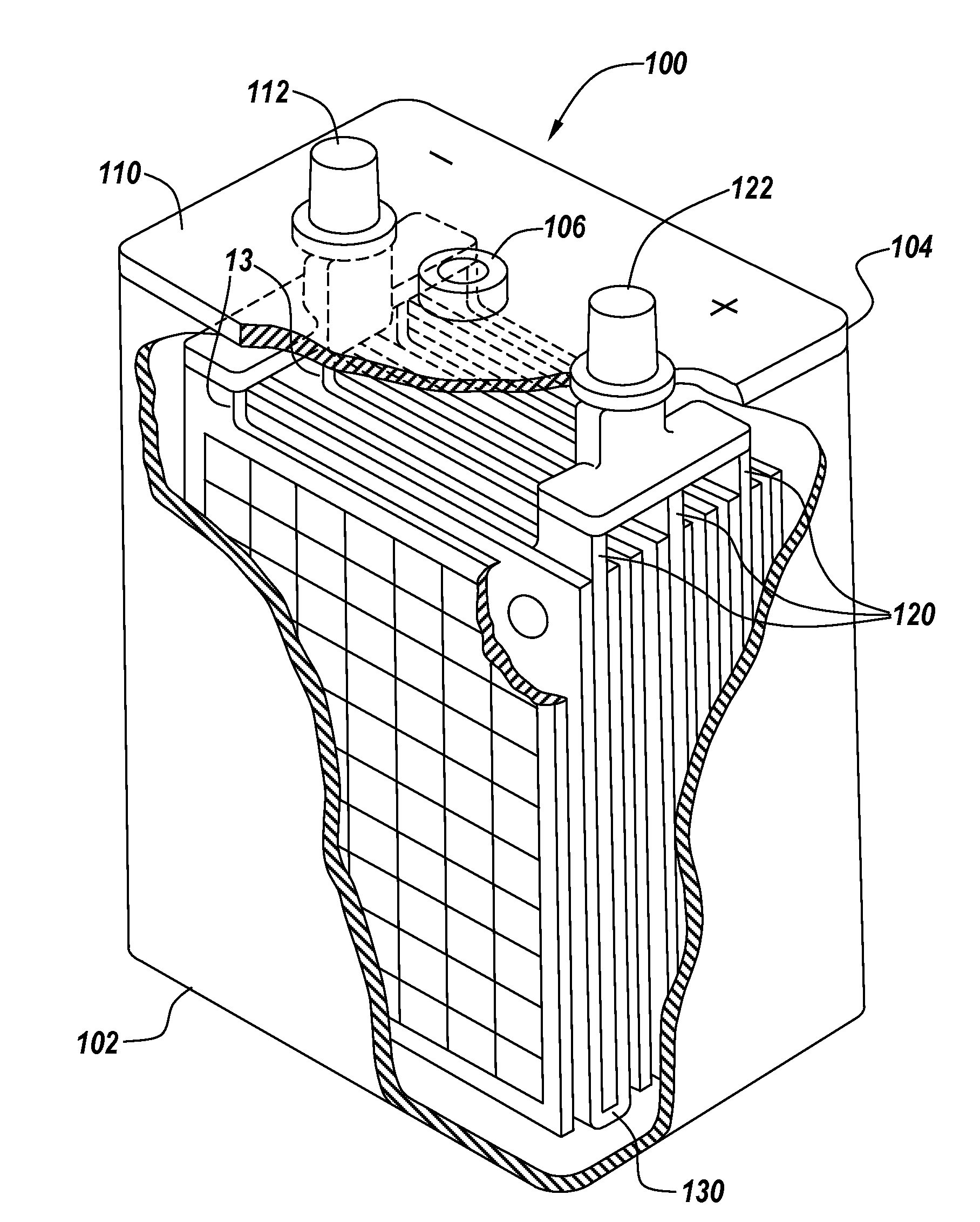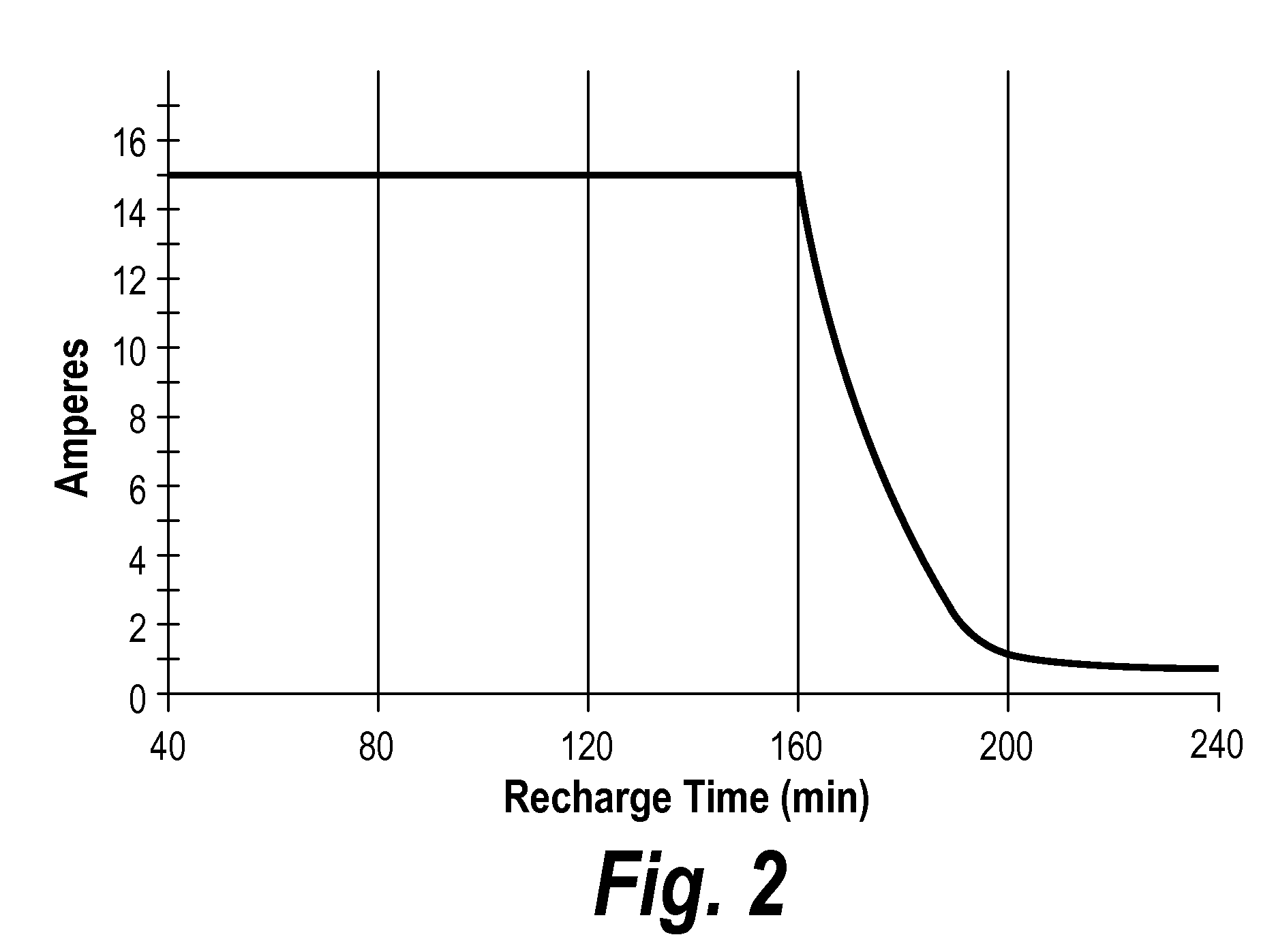Compositions and delivery systems with leachable metal ions
a technology of metal ions and delivery systems, applied in the direction of cell components, cell component details, electrochemical generators, etc., can solve the problems of flooded batteries, flooded batteries, valve-regulated lead acid (“vrla”), complex acid batteries, etc., and complicating battery recharging is a charge imbalance between the negative plate(s)
- Summary
- Abstract
- Description
- Claims
- Application Information
AI Technical Summary
Benefits of technology
Problems solved by technology
Method used
Image
Examples
example 1
Glass Patties and Ground Particles
[0624]Glass melts were made with the following metal oxides mixed into the sand and other ingredients. The basic glass composition can generally be described as 66.25% SiO2, 3.5% Al2O3, 5.6% CaO, 2.8% MgO, 5.5% B2O3 and 14% NaO with the amount of SiO2 varied to accommodate from 0.4% to 6% of added metal oxide. The dissolvability of the glass in electrolyte can be increased or decreased based on the percent of boron and sodium oxide in the melt.
[0625]Specific glass melts produced contained the following components:
TABLE 10Specific Glass CompositionsAntimonyCompositionNickelCompositionTitaniumCompositionTinCompositionOxideweight, %Oxideweight, %Oxideweight, %Oxideweight, %SiO266.5SiO266.55SiO266.55SiO266.25Al2O33.5Al2O33.5Al2O33.5Al2O33.5CaO5.6CaO5.6CaO5.6CaO5.6MgO2.8MgO2.8MgO2.8MgO2.8B2O35.5B2O35.5B2O35.5B2O35.5K2O1.7K2O1.7K2O1.7K2O1.6Na2O14Na2O14Na2O14Na2O14Sb2O30.4NiO0.35TiO20.35SnO20.75Total100Total100Total100Total100CopperCompositionCobaltComposi...
example 2
Leaching Measurements
[0626]Glass patties were made as described in Example 1 and were then ground into particles for leaching test and electrochemical tests. Particle sizes were selected to approximate the surface area of fibers to determine efficiency of metal ion dissolution and surface-side reactions on the negative electrode to consume electrical current. Exemplary particle size distributions are shown in Tables 11 and 12.
[0627]Particle size, surface area, and fiber diameter correlations are shown in FIGS. 34-36. The particle size, based on average particle diameter, can be translated to fiber diameter by surface area, as the surface area is a common attribute. The surface area of an object affects how fast the object (i.e., a glass fiber or glass particle) is dissolved by the electrolyte and the resulting concentration of metal ions in the electrolyte. The relationship is summarized in the equation y=1.5402*x−1013. From this relationship the surface area (y) in m2 / g of a fiber ...
example 3
Test Cell Results / H2 Shift
[0631]Glass compositions in patty form were prepared with antimony and copper oxide components, as described in the tables below:
TABLE 17Antimony OxideAntimony GlassCompositionOxideweight, %SiO266.5Al2O33.5CaO5.6MgO2.8B2O35.5K2O1.7Na2O14Sb2O30.4Total100
TABLE 18Copper OxideCopper GlassCompositionOxideweight, %SiO266.25Al2O33.5CaO5.6MgO2.8B2O35.5K2O1.6Na2O14CuO0.75Total100
[0632]The glass patties were ground to micron sized particles, and exposed to electrolyte at room temperature for 3 days and 70° C. for 7 days, as described in Example 2. Test cells were prepared to evaluate the change in electrical performance that results from having leached metal ions in the electrolyte. The test cells were constructed according to the methods described above. Electrochemical tests of glass compositions with antimony ions at room temperature for 3 days and 70 C for 7 days are shown in FIGS. 18 and 19 respectively. Electrochemical tests of copper ions at room temperature f...
PUM
| Property | Measurement | Unit |
|---|---|---|
| Temperature | aaaaa | aaaaa |
| Fraction | aaaaa | aaaaa |
| Fraction | aaaaa | aaaaa |
Abstract
Description
Claims
Application Information
 Login to View More
Login to View More - R&D
- Intellectual Property
- Life Sciences
- Materials
- Tech Scout
- Unparalleled Data Quality
- Higher Quality Content
- 60% Fewer Hallucinations
Browse by: Latest US Patents, China's latest patents, Technical Efficacy Thesaurus, Application Domain, Technology Topic, Popular Technical Reports.
© 2025 PatSnap. All rights reserved.Legal|Privacy policy|Modern Slavery Act Transparency Statement|Sitemap|About US| Contact US: help@patsnap.com



